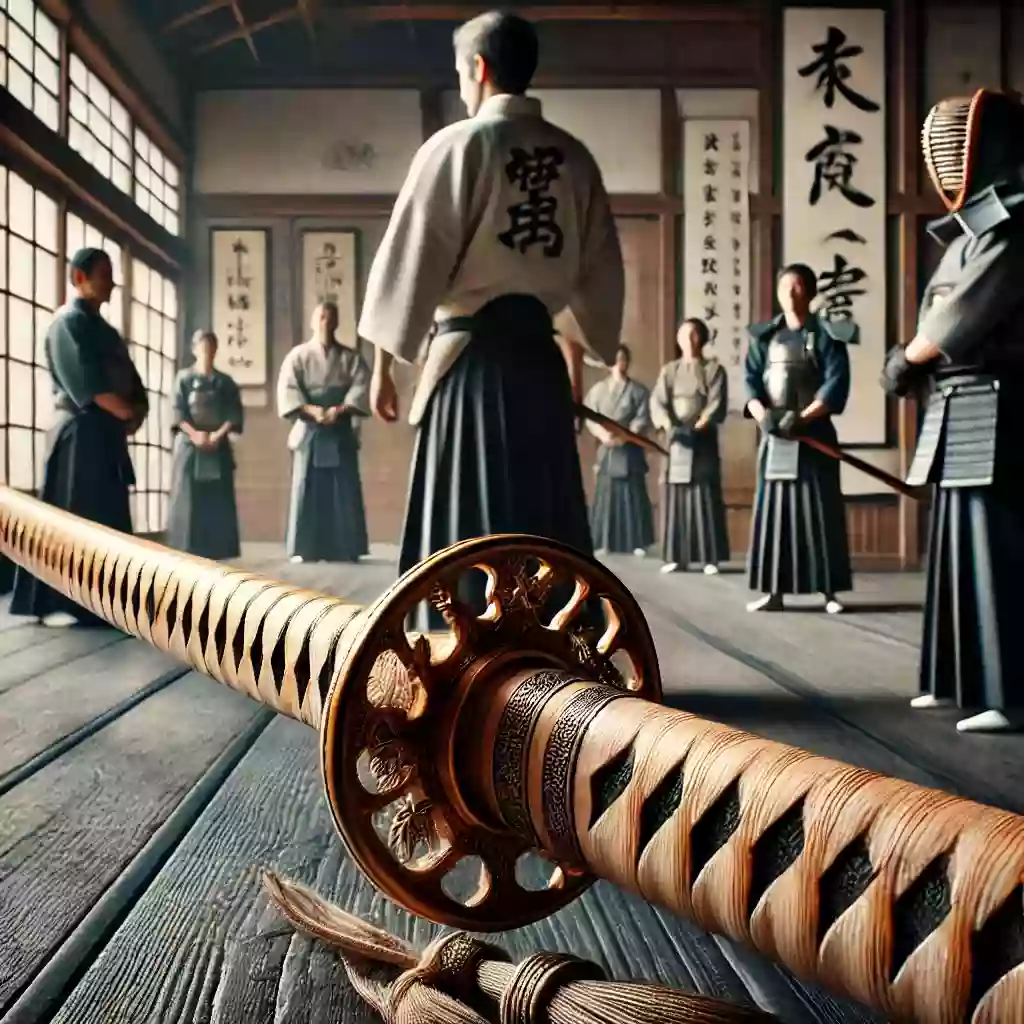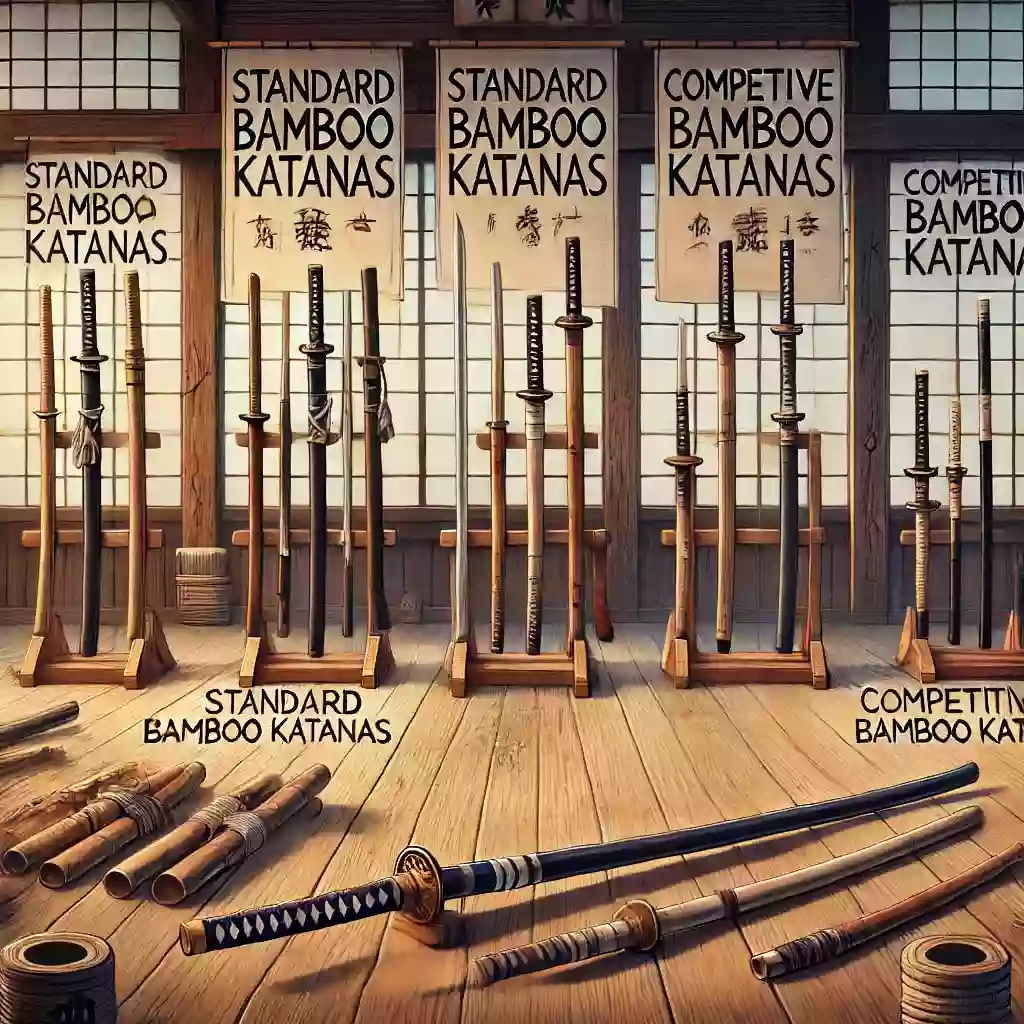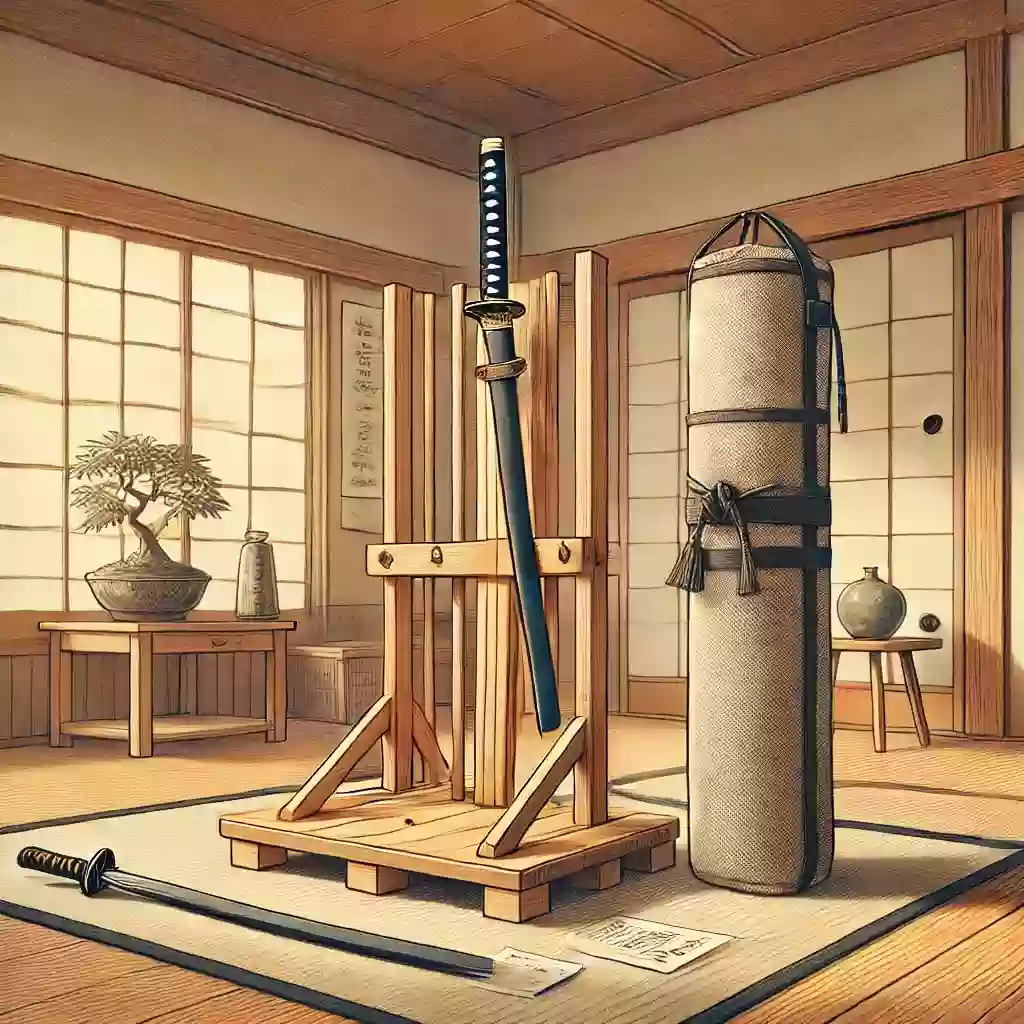In Japanese martial arts culture, the bamboo katana plays a crucial role. This sword, made primarily of bamboo, is not only used for training but also in competitions like kendo. This article explores the unique aspects of this weapon, including its origins, craftsmanship, and cultural significance.

I. Origins and Historical Background of the Bamboo Katana
1. The creation of the bamboo katana:
The bamboo katana originated in the Edo period (1603-1868) when samurai needed a safe training tool to avoid serious injuries during practice. Compared to steel swords, the bamboo katana is safer, making it the preferred training tool for samurai over time.
2. The emergence of kendo:
Kendo, a modern martial art, evolved from traditional Japanese swordsmanship. The bamboo katana’s use in kendo allows practitioners to engage in intense combat training without causing serious injuries. Kendo is both a technical and a mental and spiritual discipline.
II. Craftsmanship of the Bamboo Katana
1. Selecting materials:
The main material for a bamboo katana is bamboo. High-quality bamboo is usually sourced from specific regions in Japan known for their excellent toughness and durability. During selection, it is essential to ensure the bamboo is free from cracks and pests; only healthy bamboo can be used for making a bamboo katana.
2. Manufacturing process:
Cutting and Smoothing:
The selected bamboo is cut to the appropriate length and initially smoothed to remove rough surfaces.
Assembly and Securing:
The bamboo is cut into several parts and then assembled in a specific order and structure. Leather and string are used to increase the stability of the bamboo katana

Polishing and Quality Check:
The final step involves carefully polishing the bamboo katana to ensure a smooth surface without splinters, followed by strict quality checks to ensure safety and durability.
3. Types of bamboo katana:
Depending on their use and design, bamboo katanas can vary. For example, standard bamboo katanas for training and competitive bamboo katanas for tournaments. These katanas differ in length, weight, and handle design to meet different training needs.
III. Cultural Impact of the Bamboo Katana
1. Role in martial arts training:
The bamboo katana, as a training tool, has transcended its physical attributes to become a significant symbol in martial arts culture. In kendo training, it is used for technical practice and personal cultivation. Training with the bamboo katana helps practitioners learn the core spirit of martial arts, such as respect, etiquette, and perseverance.
2. Use in competitions:
In kendo competitions, the bamboo katana is the only permitted weapon. The competition rules strictly specify the bamboo katana’s specifications and usage to ensure fairness and safety. Kendo competitions test not only the participants’ technical skills but also their psychological resilience and tactical intelligence.
3. Modern cultural significance:
As martial arts have spread globally, the bamboo katana has gained international recognition. Today, the bamboo katana is popular not only in Japan but also among martial arts enthusiasts worldwide. It symbolizes the spread and influence of the Japanese bushido spirit.
IV. Maintenance and Care of the Bamboo Katana
1. Keeping the bamboo katana in good condition:
Daily maintenance is crucial to extend the lifespan of a bamboo katana. After use, it should be wiped clean to prevent moisture and mold. Regularly check the parts of the bamboo katana to ensure there are no loose or damaged sections.
2. Repair and replacement:
The bamboo katana may experience wear and damage during use. Minor damage can be fixed through smoothing and repair, but severe damage requires replacing parts or the entire sword. Regular maintenance and timely repair ensure the bamboo katana remains in optimal condition.
3. Storing the bamboo katana:
The bamboo katana should be stored in a dry, ventilated place, avoiding direct sunlight and high-temperature, high-humidity environments. Using a dedicated bamboo katana bag or stand can better protect the katana, preventing deformation and damage.

Final Thoughts
The bamboo katana is not only a training tool but also an essential part of Japanese martial arts culture. It symbolizes the samurai spirit and carries rich historical and cultural meanings. From its origins and craftsmanship to its application in martial arts training and competitions, and its cultural impact in modern society, the bamboo katana showcases its unique charm and importance.
By understanding the bamboo katana in-depth, we can better grasp its usage and appreciate the samurai spirit and cultural heritage it embodies. Whether as a training tool or a collectible, the bamboo katana is worth cherishing and passing down. This article aims to inspire more interest and passion for the bamboo katana and the culture behind it.